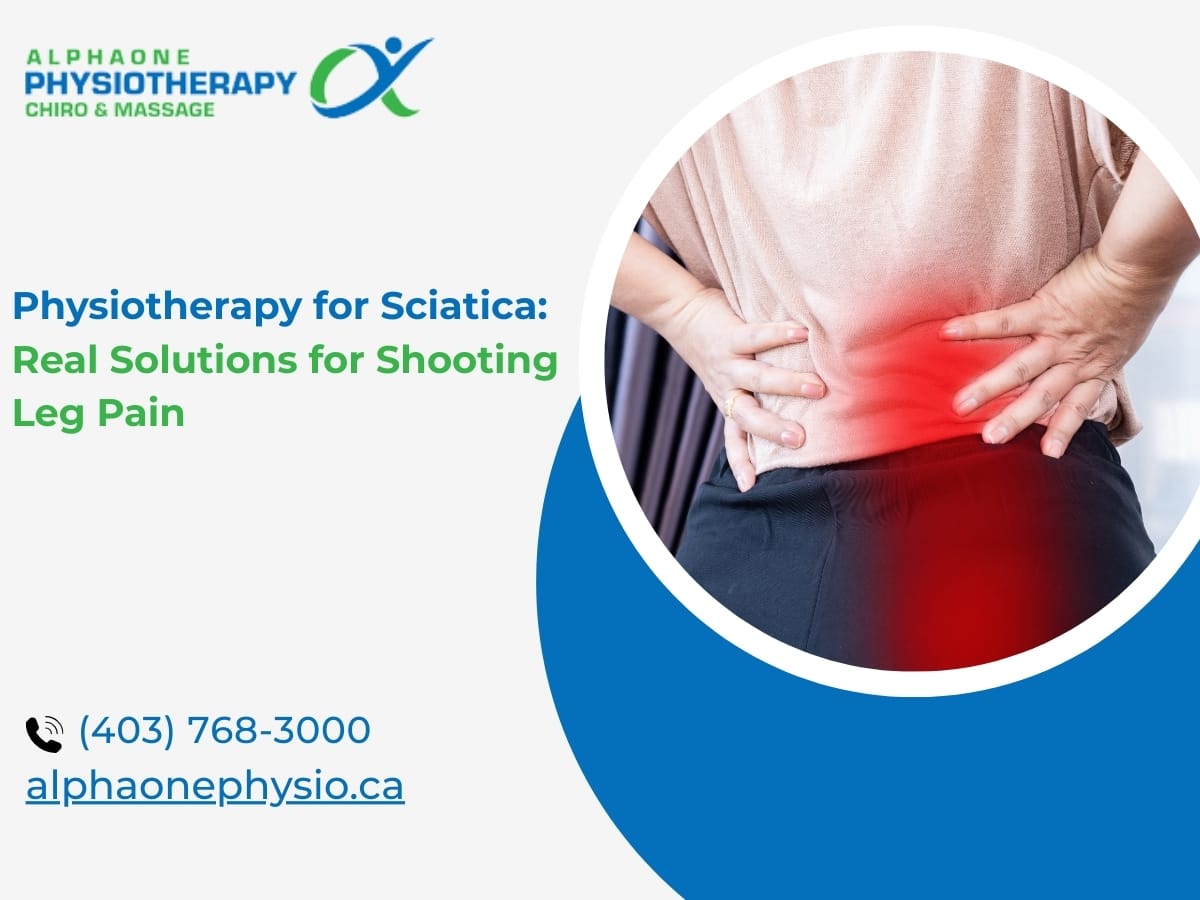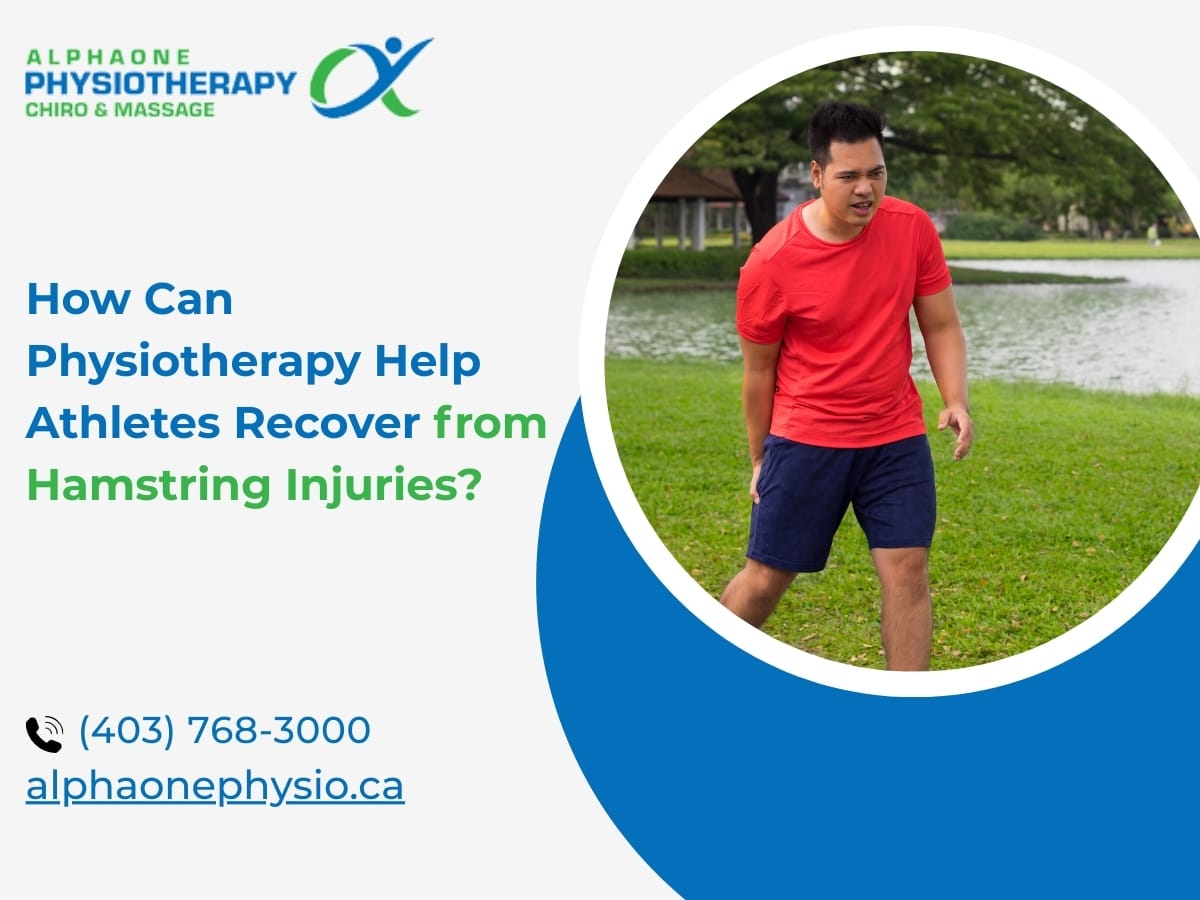Do you experience a sharp, stabbing pain in your heel when you first step out of bed in the morning? The medical term for this condition is plantar fasciitis, which is a common and sometimes debilitating clinical issue. Maybe you have heard of different treatments, one of which is Shockwave Therapy for Plantar Fasciitis, but does it work?
Alphaone Physio is dedicated to treating musculoskeletal disorders, and this comprises plantar fasciitis. We are committed to delivering care at the highest level to help you achieve the goal of relieving your pain and enabling you to return to activities you care about. Our care is fully based on evidence-based practice in physiotherapy, and we use many forms of modern technologies that complement the most recent research, so you are in good hands with us.
We will explain what plantar fasciitis is, how shockwave therapy works, and what you can expect. The effectiveness of shockwave therapy will then be argued, based on clinical research, in comparison to other treatment options.
What is Plantar Fasciitis?
Plantar fasciitis is the swelling of the plantar aponeurosis, which is a very strong band of tissue located at the heel side of the foot. This inflammation is manifested by the presence of a sharp stabbing pain that is usually well localized to the early steps taken in the morning or after not moving around for a long time.
Although pain typically occurs in the heel and can be experienced as severe enough to inhibit the performance of daily tasks, heel pain can be managed through a variety of approaches, ranging from lifestyle modifications to medication. Are factors that indicate the potential development of this condition are: longstanding involvement in the same standing spot; bad wearing of shoes; high-impact activities; and obesity.
Management can take a variety of forms, from rest and PT to high-level treatments such as SHT (also called ESWT to reduce inflammation and speed up recovery), depending on the gravity of the injury.
How Does Shockwave Therapy Work for Plantar Fasciitis?
Shockwave therapy, which includes extracorporeal shockwave therapy (ESWT) as well, is a less invasive and increasingly popular treatment method that doctors use to treat musculoskeletal issues like plantar fasciitis.
This particular therapy excludes the use of sound waves as the source of initiating a healing response in the region that is affected and therefore, leading to pain relief as well as a speedier recovery. Here, we explain the operating principles using which shockwave treatment assists those who have plantar fasciitis:
Targeting the Plantar Fascia with Sound Waves
The main objective of shockwave therapy in plantar fasciitis treatment is to influence the primary target, the plantar fascia, the thick band of tissue that stretches across the bottom of the foot. During the operation, sound waves of the device are directed at this tissue.
These waves, vertically, penetrate the affected area, stimulating the plantar fascia, and thus helping in the circulation of the blood and the regeneration of the tissues. This individualized service further helps to obtain the relief of plantar fasciitis by conducting the body’s natural healing systems.
Enhancing Blood Flow
Enhanced blood flow plays a key role in any soft tissue injury and plantar fasciitis as well. Micro-injuries through a shockwave stimulate the process of mobilization of the local cells that are responsible for providing the increased blood flow.
The circulation improvement is as essential as that because it carries nutrients and oxygen to the plantar fascia; hence, the wound is healed quickly. These may be the most fitting forms of treatment when it comes to chronic plantar fasciitis, which is associated with reduced blood flow and, at times, can be the main factor.
Promoting Tissue Regeneration
The tissue regeneration can be significantly accelerated by shockwave therapy, which is one of the main advantages. The sounds transmitted through the treatment initiate the response of cells involved with the bone and the connective tissues’ healing.
With this acceleration, the repair and growth of the new plantar fascia tissue take place, which in turn brings pain reduction and functional improvement. The earlier recovery and less painful activities of patients are features of this, which are the things all of them hope to endure when undergoing this treatment.
Breaking Down Scar Tissue
Plantar fasciitis is often associated with the formation of scar tissue because the body tries to heal the repeated rips of the fascia. Regretfully, such fibrous scar formation is not as elastic as its original tissue, and this sometimes results in the scar tissue being painful and irritated all the time.
Shockwave therapy is known for its effectiveness in breaking down scar tissues and, thus, restoring the smoothness and correct functioning of the plantar fascia. This procedure thus doesn’t just lessen the pain but also enhances the foot’s general movement.
Providing a Non-Invasive Treatment Alternative
For many patients, the attraction to shockwave therapy is apparent because it is not invasive. Different from surgical therapies, shockwave therapy does not require skin incisions or anesthesia, and the patients can return to their daily activities much sooner. Being able to set an alarm limits the risk of burns and brings the ease of automation, which makes it an optimal choice for many people.
Duration, generally, taking less than half an hour, can be offered to patients. They can return to their regular activities right after the treatment without encountering the aforementioned risks which are associated with invasive approaches.
How Does Shockwave Therapy Compare to Other Treatments?
Treatment Option | Description | Pros | Cons |
Shockwave Therapy | Uses sound waves to stimulate healing in the plantar fascia. | Non-invasive, promotes fast healing, and is effective for chronic conditions. | May require multiple sessions, and mild discomfort during treatment. |
Ice Therapy | Application of ice to reduce inflammation and numbness. | Easy to apply, immediate pain relief. | Temporary relief does not address the underlying causes. |
Steroid Injections | Injection of steroids to reduce inflammation. | Quick reduction in inflammation and pain. | Potential side effects, not a long-term solution. |
Physical Therapy | Exercises and treatments to strengthen the foot and alleviate pain. | Addresses root causes, and improves long-term outcomes. | Time-consuming, and requires regular sessions. |
Surgical Treatment | Surgery to detach the plantar fascia from the heel bone. | Permanent solution for severe cases. | Invasiveness, longer recovery time, and the potential for complications. |
Orthotic Devices | Custom or over-the-counter inserts are available to support the arch and reduce stress on the plantar fascia. | Non-invasive, can be tailored to individual needs. | May require an adjustment period, but effectiveness varies. |
Are There Any Risks or Side Effects?
When considering shockwave therapy for plantar fasciitis, it’s important to be aware of the potential risks and side effects:
- Mild pain or discomfort during treatment
- Redness at the treatment site
- Swelling in the treated area
- Bruising around the treatment area
- Temporary numbness or tingling
- Headache post-treatment (rare)
- Dizziness during or shortly after treatment
- Hyperesthesia (increased sensitivity in the treated area)
- Hematoma (a solid swelling of clotted blood within the tissues, very rare)
- Infection risk if skin integrity is compromised (extremely rare)
Conclusion
The use of shockwave therapy is fast becoming a preferred and successful treatment for plantar fasciitis, characterized by extensive pain relief and accelerated healing without the need for surgical interventions. If you are dealing with plantar fasciitis pain, booking a session with the Alphaone Physio specialist might be the ideal place to begin to see if this treatment method is suitable for you.
For more details or to make an appointment, contact AlphaOne Physio today. We will do our best to make sure you get the most advantage at treatment by employing the highest quality care and effective treatment options. Not only plantar fasciitis but also other musculoskeletal conditions that are within our responsibilities.






